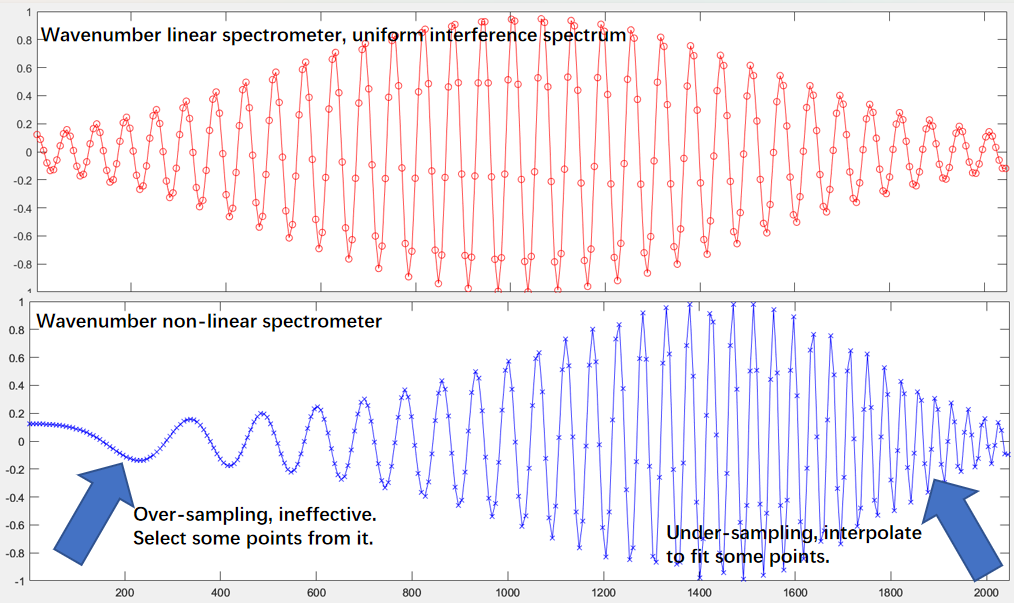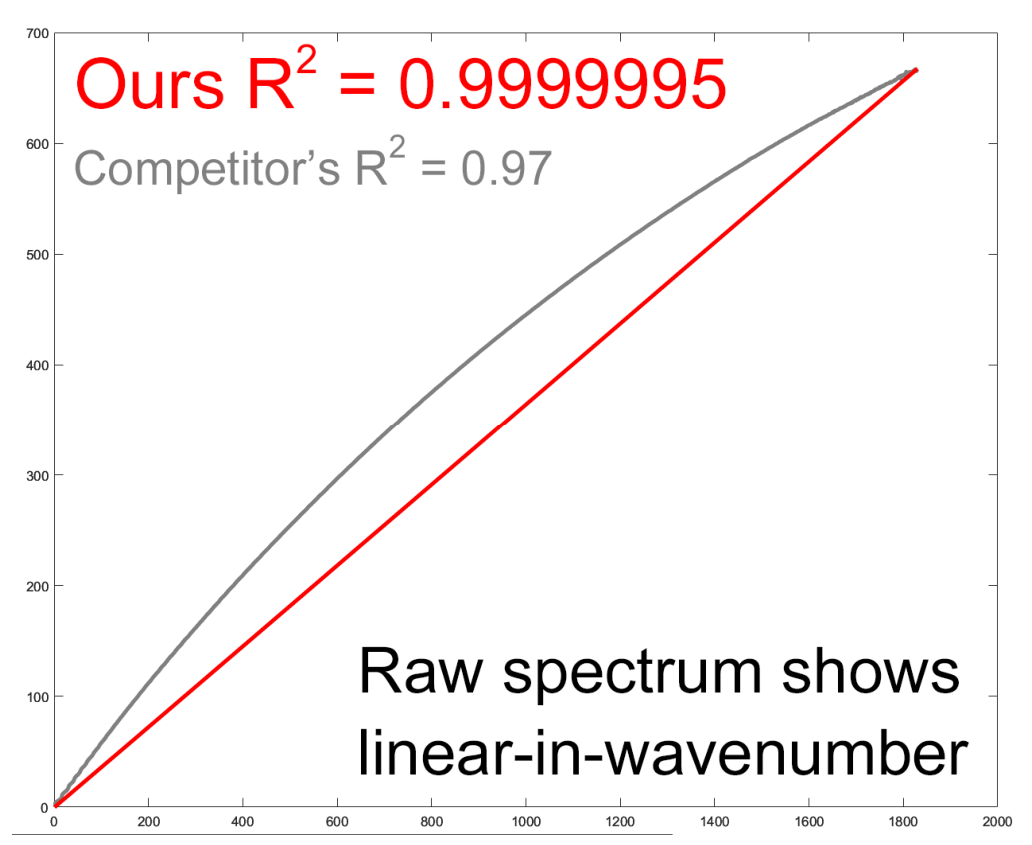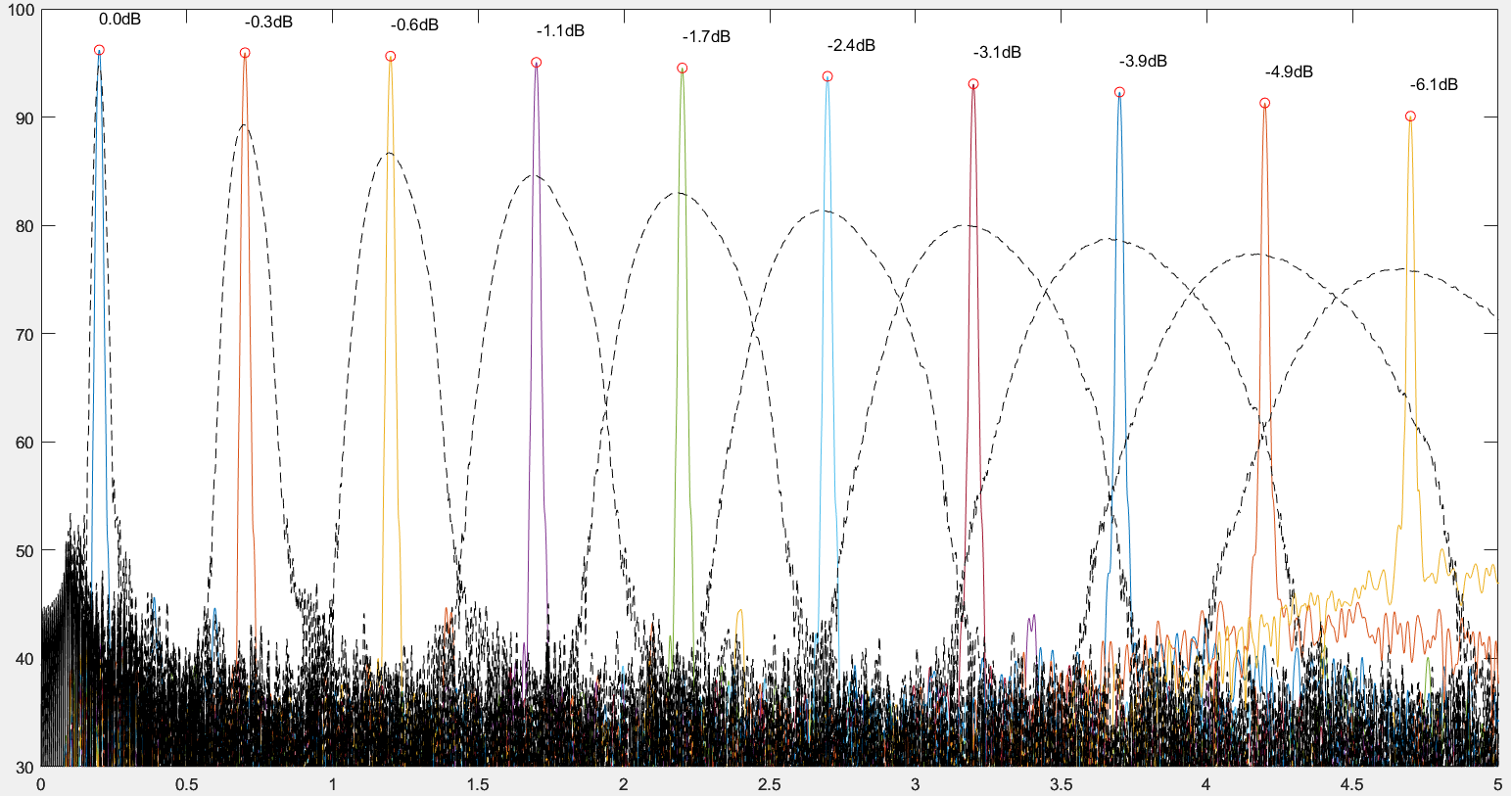
Spectral-Domain Optical Coherence Tomography (SD-OCT) Principle Diagram and Signal Processing
Optical Coherence Tomography (OCT) is an imaging method based on low-coherence interferometry. The light from a broadband source is split into a reference arm and a sample arm by an interferometer. The light in the sample arm is reflected and scattered within the sample and then recombines with the light from the reference arm to form an interference signal in the interferometer. The frequency intensity and phase information of the interference signal directly reflect the microscopic structure within the sample. To extract depth information from the interference signal, a Fast Fourier Transform (FFT) is used to convert the wavenumber domain (k) data to the spatial domain (z). FFT requires that the sampling points in wavenumber space be equally spaced; thus, the linearity of the wavenumber space—the wavenumber linearity—has a critical impact on the imaging quality of OCT.


Wavenumber Linearity/Non-Linearity in Spectrometer Interference Signals
The interference signal from a mirror placed at a certain depth, captured by the spectrometer, can visually show that the interference in a wavenumber-linear spectrometer is uniform across the entire spectral range, resulting in sharp signal peaks after FFT. In contrast, a wavenumber non-linear spectrometer often shows uneven interference patterns, leading to reduced peak intensity and broadened width after FFT. This indicates that wavenumber non-linearity degrades the signal-to-noise ratio (SNR) and resolution of OCT imaging. Quantitatively, this can be analyzed by extracting the phase information of the unwrapped mirror interference signal and performing a linear fit with the pixel coordinates of the spectrometer. The correlation coefficient R2 of this fit represents the wavenumber linearity of the spectrometer.

Degradation of Signal in Wavenumber Linear/Non-Linear Spectrometers with Increasing Depth
Using a mirror as an example, by measuring the interference signals at different mirror positions and performing a direct FFT (Roll-off performance), it can be observed that a wavenumber linear spectrometer maintains good resolution over a large imaging depth, whereas the resolution of a wavenumber non-linear spectrometer rapidly broadens with depth. There is also a significant difference in the signal-to-noise ratio (SNR) between the two.
Conventional spectrometers, which use only a diffraction grating as the dispersive element, inherently produce wavenumber non-linear OCT raw interference spectra. Even with software compensation and correction using cubic spline interpolation algorithms, the following disadvantages remain:
● The wavenumber non-linearity correction algorithm imposes a heavy computational burden, making high-speed real-time imaging difficult to achieve.
● Both linear and cubic spline interpolations introduce additional noise or artifacts.
● Due to the coupling effect of dispersion and wavenumber non-linearity, it is challenging to obtain accurate interpolation coordinate parameters in the OCT system.
Using specialized optical designs can correct wavenumber non-linearity in hardware. Such wavenumber linear OCT spectrometers produce raw interference spectra that can be directly processed with FFT (similar to the interferometric signals acquired with k-clock in swept-source OCT systems). This enables high-speed real-time imaging with excellent SNR and axial resolution.
Product Recommendation: JINSP ST830E Spectrometer
The JINSP ST830E spectrometer is a high-speed, stable commercial OCT spectrometer. It can be used for hemodynamic and vibration measurements, dermal vascular system imaging, choroidal structure imaging, and internal 3D imaging of crystalline lenses, providing high-speed, clear 3D imaging to a certain depth.
The ST830E eliminates the need for a Camera-Link acquisition card, featuring a plug-and-play USB 3.0 interface, allowing users to achieve high-resolution, high-speed imaging on a laptop.
Technical Features
Special optical design enabling hardware-based wavenumber linear sampling.
The interference spectrum can be directly processed with FFT, eliminating the need for wavenumber resampling algorithms, greatly reducing data processing complexity and enhancing system SNR.
Industry-leading line scan rate: up to 250 kHz.
USB 3.0 interface supports 20-130 kHz scan rates, making OEM integration more efficient and straightforward.
Customizable wavelength range and camera specifications based on user requirements.
Robust and mature manufacturing process, requiring minimal calibration.
Post time: Jun-05-2024

